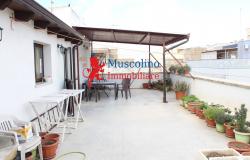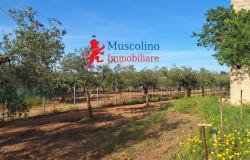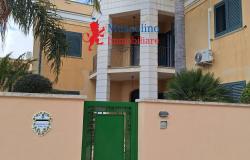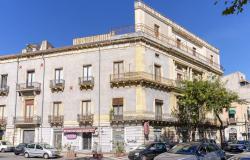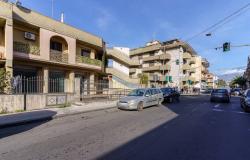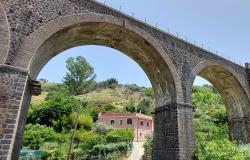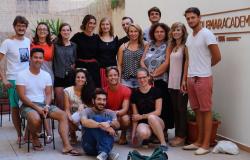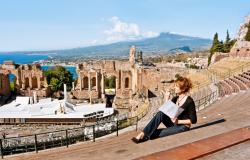Words by Pat Eggleton
September is the month when carob pods fall from their trees and the Province of Ragusa is particularly famed for its carob trees.
In the countryside the ground is thickly strewn with the pods but the last few on each tree are strangely stubborn and like to hook themselves around their branches. These have to be knocked and shaken down.
Sicilians who are lucky enough to have carob trees on their land can take the pods to warehouses to be weighed and sold for 20-40 centesimi per kilo depending on the market and you need surprisingly few pods to make up the weight.
Carob trees are loved in Sicily because they are evergreen and provide excellent shade as much as for their fruit. They are now a protected species.
 The fruit of the carob tree has provided man with nourishment since ancient times and in Sicily the fruit is also known as “il pane di San Giovanni” [St John’s bread] because St John ate the seeds in the desert:
The fruit of the carob tree has provided man with nourishment since ancient times and in Sicily the fruit is also known as “il pane di San Giovanni” [St John’s bread] because St John ate the seeds in the desert:
"And John was clothed with camel’s hair and with a girdle of skin about his loins; and he did eat locusts and wild honey.”
Mark, 1:6
“And his meat was locusts and wild honey”
Matthew,3:4
 It is generally accepted that the “wild honey” was carob and, interestingly, until fairly recent times country people used to bake carob pods and add honey to them.
It is generally accepted that the “wild honey” was carob and, interestingly, until fairly recent times country people used to bake carob pods and add honey to them.
Sometimes the carob tree is called the “locust tree” because locusts are attracted to it, so the Biblical locusts here could also be carob.
There is another Biblical reference to what is probably carob in the Parable of the Prodigal Son:
“And he would fain have filled his belly with the husks that the swine did eat: and no man gave unto him.”
Luke, 16:15.
 Today in Sicily, carob is ground to make a thick-textured flour which is used in the production of biscuits. This flour is hard to find in non-industrial quantities but I once came across a small packet by chance in the butcher’s.
Today in Sicily, carob is ground to make a thick-textured flour which is used in the production of biscuits. This flour is hard to find in non-industrial quantities but I once came across a small packet by chance in the butcher’s.
Carob is used in some types of Modican chocolate, the manufacture of a liqueur and is the main ingredient in some local cough sweets. I absolutely hate the taste of the cough sweets but they work!
Local pasta shapes called lolli are also made from carob flour and carob is used in health foods and cattle feed.
My friend Gino the artist makes a traditional pudding, a type of blancmange, from carob and has given me the recipe called "Budino di carrubo" (carob pudding).
Click here to know the ingredients and how to make it.

